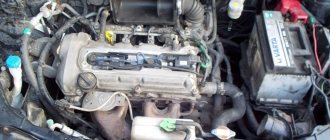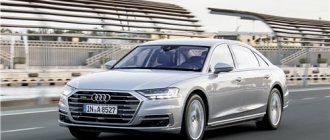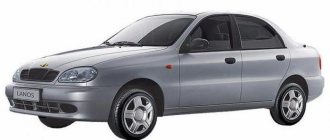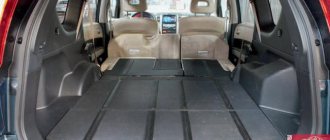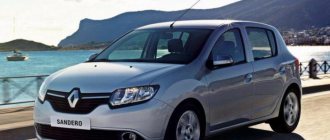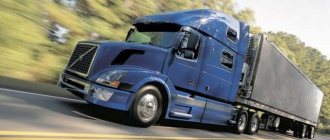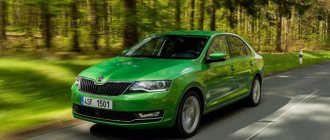Suzuki SX4
Suzuki SX4
Suzuki SX4
Previously, front- and all-wheel drive cars in the top-end GLX configuration and with an automatic transmission were brought to us from the Land of the Rising Sun. They accounted for more than half of sales. Now they have been released in Hungarian. There are several advantages from changing the location of production: Russian prices have become less dependent on the rise in the yen exchange rate, and delivery times have been reduced. After all, cars from Europe get to us much faster - in about three to four weeks (not months).
External and internal view
In fact, initially, this model did not position itself as a crossover, since the car was too low for this title. Initially, it was a front-wheel drive hatchback. But, after restyling, they began to produce an all-wheel drive version of the “Japanese”. After the presentation of the Suzuki SH4 NEW, it became clear to everyone that this is now a full-fledged crossover. Some owners argue that this car does not live up to the SUV. But where they produce the Suzuki SX4, they create a car that can deal with any road irregularities and potholes. Instead of the pyramid body that the first generation of the model had, we now see a stylish, dynamic, sporty body.
The car has changed significantly; it has become larger than its predecessor. The length of the Japanese crossover is 4300 mm, the width of the car has increased by only ten millimeters, and the height is 1590 mm. The wheelbase of the “Japanese” is 2600 mm, and the ground clearance is 180 mm. The basic version of the crossover weighs 1085 kg, and the weight of the maximum configuration is 1190 kg. Not only the design of the Suzuki SX4 has changed, the inside of the car has also become different. Engineers have removed all unnecessary things from the interior, and now it looks simpler, but more practical. The central panel of the crossover has become more ergonomic and modern. Inside, the “Japanese” turned out to be simple and unimpressive.
Owners say that the interior of some competitors' cars looks better and more interesting. But what did you want from a budget car? Yes, the finishing materials used were not of the highest quality and expensive, but the manufacturer carefully fitted all the elements and parts. There is nothing superfluous here. The volume of the luggage compartment has increased - 460 liters (previously it was 270 liters). And with the rear seats folded down it will become 1269 liters. Now you know where Suzuki SH4 is assembled, and how the car has changed after the updates.
This is interesting: Which minibus to choose for work in terms of price
Suzuki SX4
By the way, the Hungarian Suzukis seem to be the same from the outside as their Japanese counterparts, but there are still differences between them: the “Europeans” have a different front bumper and a set of color options, two-tone upholstery, a battery with a capacity increased to 60 Ah, the antenna has moved from the rear of the body to the front edge of the windshield, the lower section of the rear lights are orange (instead of white), the cup holders are square, etc. But the most important thing is that in all-wheel drive vehicles the ground clearance has been increased by 15 mm (up to 190).
Weaknesses and disadvantages of a used Suzuki SX4
The car body deserves only positive reviews; it firmly resists the effects of the reagents that are generously sprinkled on our roads; the manufacturer clearly did not spare any expense in the anti-corrosion and paint coating. Therefore, if the selected car has blistered paint or spots of rust, most likely the car was restored after an accident. But the threaded connections of the chassis, electrical wiring contacts, muffler holder, rear beam and gear lever slides are prone to corrosion and require special attention. For example, if the backstage sours, there is a risk of breaking off the plastic guides. Another disadvantage is the poor illumination of the road from the standard headlights.
Power units
On the domestic secondary market, the Suzuki SX4 is presented with gasoline engines 1.5 (110 hp), 1.6 (107 and 112 hp installed after restyling), 2.0 (145 and 150 hp). Rarely, but still there are cars with diesel engines 1.6 (90 hp) and 1.9 (90, 120 hp), imported from Europe.
The most widespread in the CIS is a 1.6-liter gasoline power unit with a variable valve timing system and a timing chain drive. On most copies, chain replacement was required after 150,000 km, and two tensioners also needed to be changed at the same time. The main disadvantage of this engine is considered to be poor dynamics at low speeds; for confident movement it is necessary to keep the engine at high speeds. If we talk about the reliability of this motor, then there are no serious complaints about it, the main thing is to change the oil on time and pour high-quality gasoline. If the last recommendation is neglected, there is a high probability of premature destruction of the catalyst. On cars of the first years of production, failures in the engine software are possible. The weaker power unit turned out to be no less reliable.
The two-liter engine is demanding on oil quality and service intervals (every 10,000 km). When using low-quality lubricants, the hydraulic timing chain tensioner fails prematurely, and the chain can also stretch - eliminating any of these problems is expensive. All gasoline engines are not equipped with hydraulic compensators, so the manufacturer recommends checking the valve thermal clearances every 40-50 thousand km. But practice has shown that valves do not always need adjustment even after 100 thousand kilometers.
Other minor drawbacks inherent in all engines include the short service life of the generator (the problem is most often encountered by owners who rarely use their car). The culprit for a unit failure is its poor location, which causes dirt to accumulate in it, and when driving through deep puddles, water can get into it. Symptoms include knocking, creaking and other extraneous sounds. If there is a problem, do not rush to buy a new generator, since in most cases simple cleaning helps to restore the unit’s functionality.
The oxygen sensor (lambda probe) is also not famous for its reliability. If it malfunctions, the power unit may begin to operate unstably, and fuel consumption also increases significantly. As a rule, this sensor does not stop working immediately; therefore, it is unlikely that it is faulty during a test drive, so diagnostics should be done before purchasing. If the sensor fails completely and is depressurized, it is unlikely that you will be able to start driving the car. In addition, there is a high probability of serious engine damage followed by expensive repairs. Another disadvantage is the high cost of the fine fuel filter, which is recommended to be changed every 160,000 km ( changed together with the fuel pump ). The cost of the original part fluctuates around 500 USD.
This is interesting: How to choose an inexpensive brand of car with an automatic transmission for a girl?
Transmission
The Suzuki SX4 was equipped with two gearboxes – a 5- and 6-speed manual gearbox (the latter was installed only in tandem with diesel engines) and a 4-speed automatic. Both transmissions are reliable and easy to maintain. The weak point in the mechanics is the clutch; if in front-wheel drive versions its average service life is 90-100 thousand km, then in cars with all-wheel drive the clutch has to be changed after 70-80 thousand km. Owners often complain about unclear gear shifting (especially first gear) and noise from the bearings; replacement does not solve the problem for long. The disadvantage of the automatic is its slowness and jolts during gear changes. If the automatic transmission fails, repairs will be expensive, so before purchasing, be sure to conduct a full diagnostic of the unit.
The all-wheel drive system is reliable, but this car should not be considered as an SUV, since the electromagnetic clutch that the car is equipped with is not designed for heavy loads and quickly overheats. For those who like to stick the car into the mud (snow) to the fullest, it is important to remember that when the clutch overheats, the rear axle automatically disengages. The first repair costs will be required after 70,000 km - replacement of drive seals. Frequent off-road forays negatively affect the service life of the driveshaft crosspiece. A signal of severe wear of the crosspieces is clicking, grinding, squeaking, or crackling sounds from the driveline box when starting to move and in the future, especially when releasing the gas or increasing speed. With careful use, crosspieces last more than 100,000 km. The original part is sold complete with a cardan and is not cheap - about 600 USD. Fortunately, our services have learned how to restore this unit - 100-200 USD.
How does he drive?
Actually, there is nothing extraordinary in our “Sex” (a frivolous nickname stuck to “ES-X” on a specialized Internet forum): it is a completely standard car, but in European specification, which fundamentally differs from the Russian SX4 only in the power unit. And even that is not too significant: thanks to different settings, the engine complies with Euro-5 environmental standards - while Euro-4 cars are sold in Russia. The engine develops not 112, but 120 horsepower, and its maximum torque is 6 Nm higher and occurs not at 3800, but at 4400 rpm. That's the whole difference. And I had to check how susceptible such an engine is to Russian fuel: in six months, a small Suzuk should run 30 thousand kilometers, refueling at any - even the most terrible - gas stations. In general, the worse, the better!
Looking ahead, I’ll just say that six months ended up stretching over almost eight months; the catch-up that the SX4 was able to get from me was 27,195 kilometers. But this is more than enough time for a lasting feeling of attachment to develop.
Gasoline engines
All SX4 gasoline engines are of Japanese origin and have a high degree of reliability.
One of the most common was the 1.6-liter gasoline unit (M16A) with a variable valve timing system on the intake shaft and a timing chain drive. The 107-horsepower engine requires maintaining high speeds for confident movement. At a calm pace, it guarantees fuel consumption of 9 l/100 km.
The engine is very reliable, although some owners had to deal with catalyst malfunctions and software malfunctions during the warranty period. Poor quality gasoline quickly damaged the catalyst. Some had to resort to replacing it under warranty even after a mileage of 30-40 thousand km. Today, you will have to pay around 10,000 rubles to remove the catalyst and reflash the engine ECU.
Since 2009, a modernized version of the M16A engine began to be installed. As part of the transition to the more stringent Euro 5 standard, the intake manifold and air filter were modified. Power increased to 120 hp. The engineers also worked on the catalyst - it stopped bothering the owners.
In some markets, a 1.5-liter gasoline unit with a capacity of 99-110 hp has become the base unit. (M15A). It is made of aluminum and has a 16-valve DOHC gas distribution system, as well as a timing chain drive. After restyling in 2009, the engine received a VVT variable valve timing system.
This is interesting: Responsible storage: what is it and what is it for?
M series engines have mechanical valve clearance adjustment. This is done using washers, and clearance control is prescribed every 30,000 km. But in reality, the need for adjustment does not arise for a very long time.
American versions were offered with a 2-liter J-series gasoline unit. This engine is found in the Grand Vitara. In SX4 it has undergone necessary changes related to the location. In the Grand Vitara the engine is placed longitudinally. Technically, the J20A is similar to the motors of the M family. Two chains are used to drive the timing chain - short (upper) and long (lower).
The 2-liter engine has more attractive power compared to the 1.6, but it will be more expensive in terms of maintenance.
Diesel engines
In addition to gasoline units, the model was also equipped with diesel units - developed by Fiat (very rare in Russia).
The 8-valve turbodiesel 1.9 DDiS (1.9 JTD / D19AA) is equipped with a timing belt drive. Its strengths are high torque and low fuel consumption. But in the Suzuki SX4 with such an engine, you will have to take into account possible turbine breakdowns and the low durability of the dual-mass flywheel. In addition, the particulate filter is burned by injecting an additional portion of diesel fuel during the exhaust phase. This method usually means a high risk of diesel fuel leaking into the engine oil.
After restyling, 1.9 DDiS was replaced by 2.0 DDiS (2.0 JTD). This is an M-Jet engine (D20AA) with a 16-valve DOHC head and many other improvements. He showed himself to be less reliable. In addition to the problems typical for diesel engines, pump leakage was also encountered. The particulate filter here is already located in a common block with the catalytic converter, immediately behind the turbocharger. The process of soot regeneration has become simpler, which means that problems with it have decreased.
The range also included a more modest 1.6-liter turbodiesel – the PSA HDi engine in the 9HX version. It never had a diesel particulate filter and was only intended for front-wheel drive SX4s.
The trunk capacity is limited by the wheel arches - 270-625 liters.

